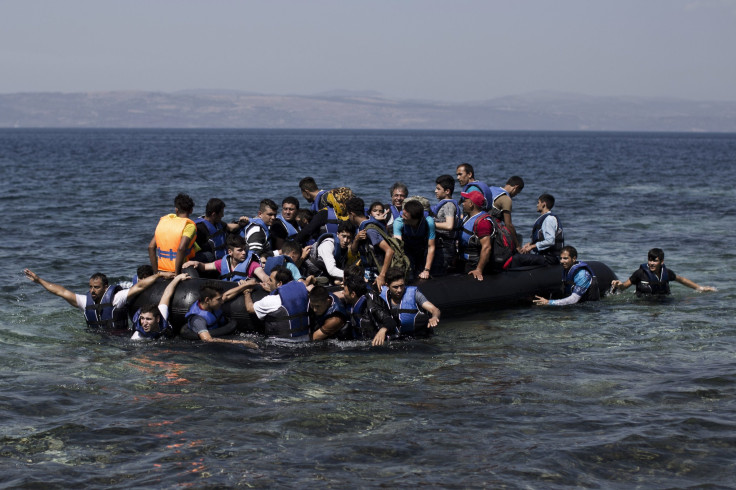Refugee Crisis 2015: Humanitarian Groups Rescue 301 People In Mediterranean Sea As Europe Migration Escalates

Humanitarian workers rescued 301 people aboard rubber dinghies floating in the Mediterranean Sea Saturday. Crews made three back-to-back rescues, bringing those saved aboard a northbound vessel, according to reports by two charitable organizations.
Doctors Without Borders, aka MSF for its French acronym, and Migrant Offshore Aid Station said on Twitter that migrants and refugees from African countries were safely transported to the M.Y. Phoenix, a 130-foot search-and-rescue ship operated by the two charities. Physicians said they were providing treatment to passengers, many of whom were beaten or stabbed while in Libya, the major launching point for smugglers’ boats headed to Europe.
Crew members aboard the Phoenix separately rescued an additional 255 people Thursday. Another MSF vessel, the Dignity I, rescued 379 people during three missions Friday, the organization said on Twitter.
UPDATE: #Phoenix rescued 197 people from other 2 rubber dinghies. Now heading north with its 301 passengers @moas_eu pic.twitter.com/SQn1t3wEFT
— MSF Sea (@MSF_Sea) September 19, 2015BREAKING: @moas_eu #Phoenix & @seawatchcrew completed the rescue of 104 ppl. Many present injuries suffered in Libya. pic.twitter.com/rbUoe30V3L
— MSF Sea (@MSF_Sea) September 19, 2015The International Organization for Migration (IOM) has estimated that more than 464,000 migrants and refugees have crossed into Greece and Italy by sea to this point in 2015. Afghans and Syrians escaping domestic wars account for about one-half that group. The rest hail from Eritrea, Iraq, Nigeria, Pakistan, Somalia and Sudan, where brutal poverty and declining security conditions are pushing people to search for safety on Europe’s shores.
But almost 3,000 people have died while attempting to cross the Mediterranean this year, IOM found in its latest Missing Migrants Project update. Flimsy boats are prone to capsizing, and weather conditions can turn violent. Passengers are frequently stranded and quickly run out of food and water supplies. Deaths in the Mediterranean accounted for nearly three-quarters of total migrant and refugee deaths worldwide, making the sea the deadliest corridor to Europe in the current crisis.
This month, MSF and the Migrant Offshore Aid Station reported their largest rescue operation since crews set out in May. In six separate rescue missions Sept. 2, nearly 1,700 people were brought aboard the Phoenix, Dignity I and Bourbon Argos vessels. Most of the people rescued came from Eritrea, Nigeria and Somalia: They included about 550 women and around 200 children, toddlers and babies.
© Copyright IBTimes 2025. All rights reserved.




















